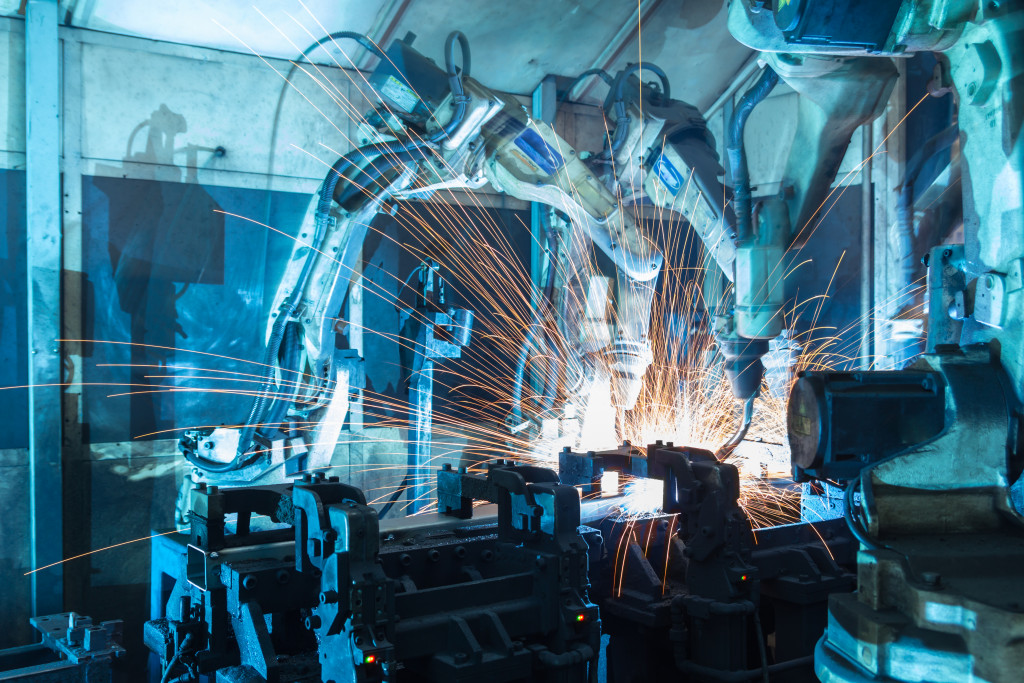The importance of automation in manufacturing and other operations is evident. By automating these processes, companies can save time and money while improving safety and quality.
For example, a study by the Association for Manufacturing Technology found that automated equipment can improve productivity by up to 25%. In addition, computerized systems are often more reliable and accurate than human operators, leading to fewer errors and defects.
Automation also helps to reduce costs. For instance, a company can save money on wages by automating tasks that human employees once did. Automation can also help reduce energy costs, as machines use less power than people.
Overall, automation is critical in achieving operational efficiency and reducing costs. The statistics speak for themselves: automation is essential for businesses looking to improve their bottom line.
However, automation can take things further by including the maintenance process. Here are a few things to consider when automating your company’s maintenance operations.
Understand the Existing Process
The first step is to understand the existing process. This step means understanding how tasks are performed and what could be improved. One way to do this is to map out the current strategy. It will help you see where organizations can improve and what steps can be automated.
It is also essential to understand the people involved in the process. It includes understanding their roles, responsibilities, and skillsets. By understanding the people involved, you can better determine how organizations can integrate them into the new process. There will likely be some changes to the roles and responsibilities when automation gets introduced, so it is essential to understand these dynamics before making any changes.
Performing Preventive Maintenance
Preventive maintenance is one of the most critical aspects of an effective maintenance strategy. By performing preventive care, you can avoid costly downtime and keep your equipment running smoothly.
There are several ways to perform preventive maintenance. The most common method is scheduled downtime. This is where you plan maintenance activities during specific time windows. For example, you may schedule downtime for the weekends or at night when production is not taking place.
Another method is condition-based monitoring. This is where you monitor the condition of your equipment and perform maintenance activities when necessary. You can do this b using sensors and other data-gathering devices that send information to a central location.
It is important to note that Companies can automate scheduled downtime and condition-based monitoring. There are software solutions that can help you automate these processes.
Using Automated Diagnostics

Automated diagnostics is another crucial aspect of an effective maintenance strategy. By using computerized diagnostics, you can quickly and accurately identify problems with your equipment. Businesses or teams can use this information to perform maintenance activities.
There are several ways to gather diagnostic information. The most common method is to use sensors. These sensors can be placed on equipment or in the environment. They can then send data to a central location where the company can analyze it.
Control valves are challenging to maintain and operate. They are often the root cause of process downtime.
To help you overcome these challenges, you can use automated diagnostics. Several software solutions can help you automate the diagnostic process. You can partner with a company that offers control valve diagnostic services to get started.
Another method is to use data logging. This is where you collect information about the equipment over time. Companies can then use this information to identify trends.
You can also use a combination of these methods. For example, you may use sensors to collect real-time data and data logging to collect historical data. You can then use this information to get a complete picture of the equipment’s condition.
Improving Maintenance Documentation
Maintenance documentation is another essential aspect of an effective maintenance strategy. By improving your maintenance documentation, you can ensure that the correct information is being collected and stored. You can then use this information to improve the overall efficiency of your maintenance operations.
There are several ways to improve your maintenance documentation. The most common method is to use electronic documentation. This documentation can be stored in a central location and accessed by authorized personnel.
Another method is to use barcodes. Barcodes can be placed on equipment or work orders. They can then be scanned and the information uploaded to a central database.
Barcodes offer several advantages over traditional methods of documentation. They are more accurate, and they can be processed much faster.
Conclusion
These are just a few steps to automate your operations maintenance. By taking the time to understand the process and the people involved, you can ensure that the automation process is successful. In addition, by using automated diagnostic tools and improving your maintenance documentation, you can improve the overall efficiency of your maintenance operations.

